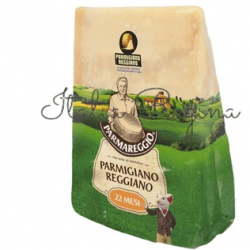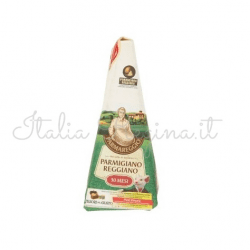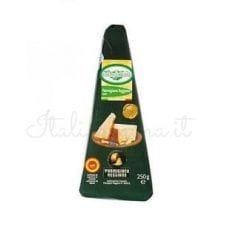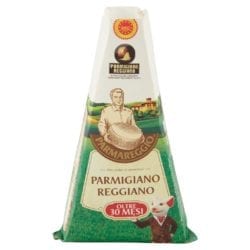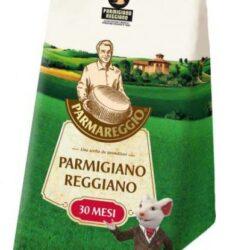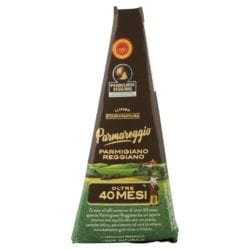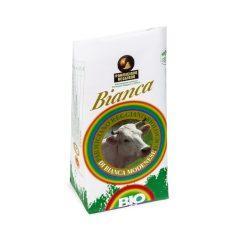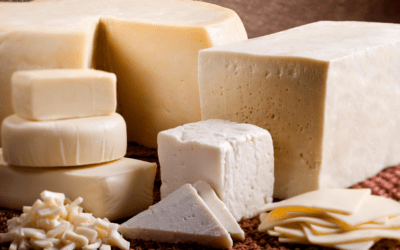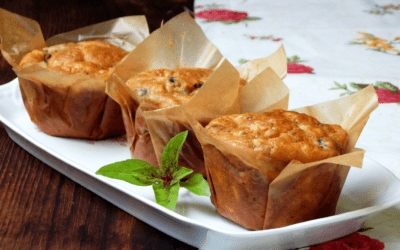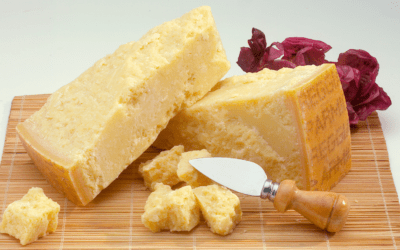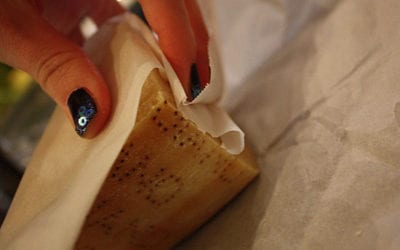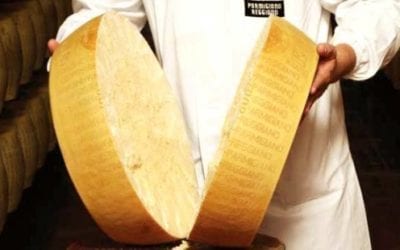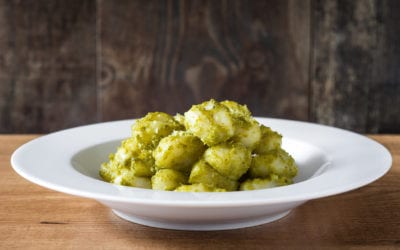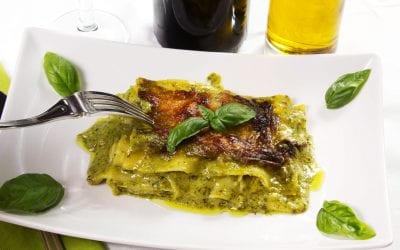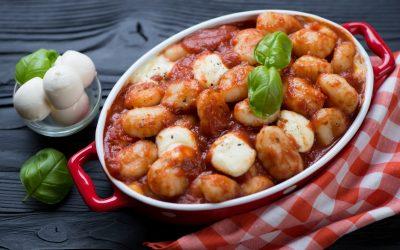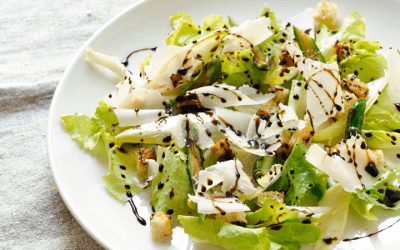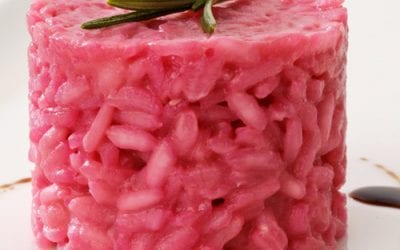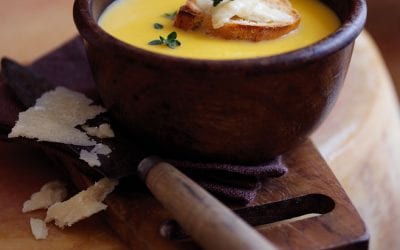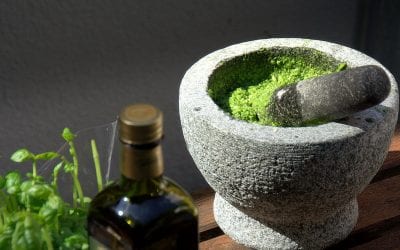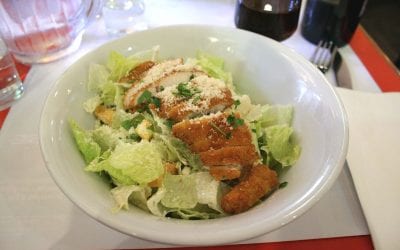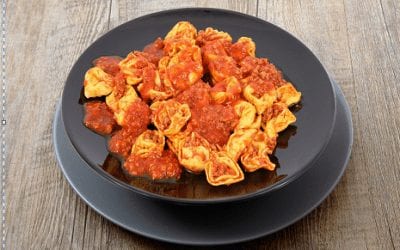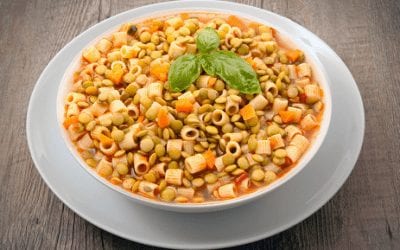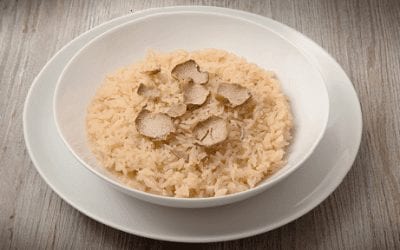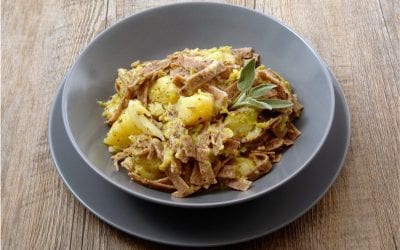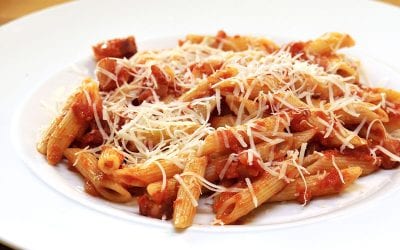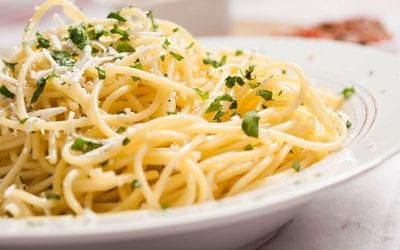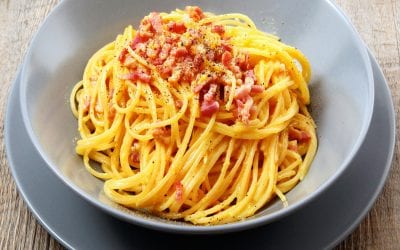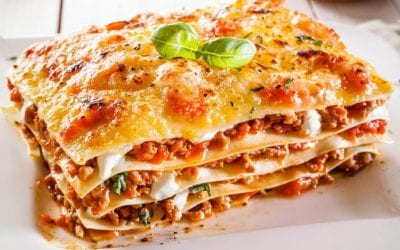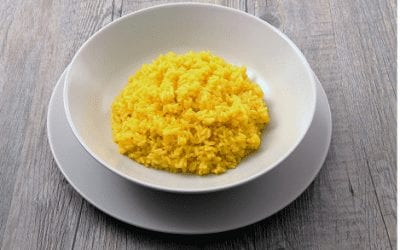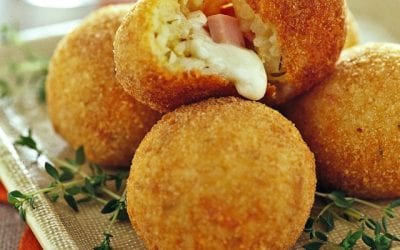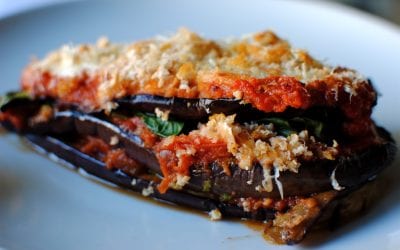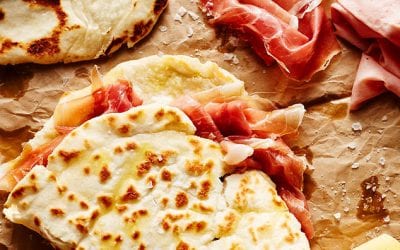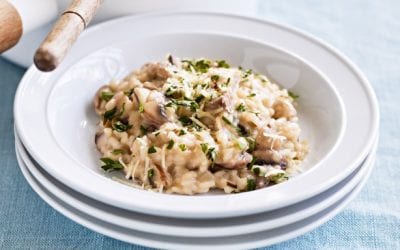Parmesan
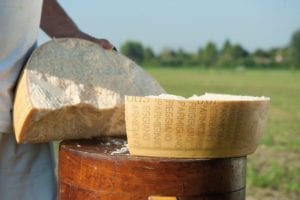 Parmesan, more properly called Parmigiano-Reggiano, is a typical Made in Italy product. Parmesan has been loved for over nine centuries for its excellent quality and incredible flavor.
Parmesan, more properly called Parmigiano-Reggiano, is a typical Made in Italy product. Parmesan has been loved for over nine centuries for its excellent quality and incredible flavor.
Parmesan or Parmigiano-Reggiano is a DPO, Protected Designation of Origin, based in the provinces of Parma, Reggio Emilia, Modena, and parts of the provinces of Mantua and Bologna, where forage is grown, milk is produced and processed into cheese, maturation and packaging take place.
3.5 liters of milk are used to produce 1 Kg of cheese, nor silage (the use of fermented forage to feed cattle) or additives and preservatives (even natural) are allowed to produce the “King of the cheese” and every wheel must have 12 months of minimum maturation (the average is 24 and can have even 30 months).
Extraordinary, highly digestible, totally natural: Parmesan is the King of Cheese.
Parmesan: buy here the best autentic Italian Parmigiano Reggiano
-

Parmesan – Parmigiano Reggiano (22 months) – 800 gr
€27.70 -

Parmesan – Parmigiano Reggiano (30 months) – 250 gr
€14.90 -

Parmesan (24 months) – Solo di Bruna – 800 gr
€34.90 -

Parmesan PDO Cheese – Parmigiano Reggiano – 250 gr
€9.90 -

Parmigiano Reggiano (30 months aged) – 400 gr
€26.00 -

Parmigiano Reggiano (30 months aged) – 800 gr
€32.00 -

Parmigiano Reggiano (40 months) – 200 gr
€16.90 -

White Cow Parmigiano Reggiano (24 months aged) – 500 gr
€32.00
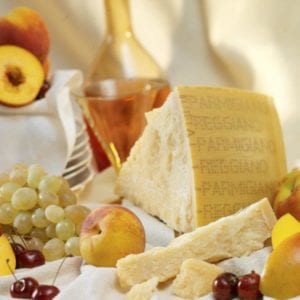 The wheels weigh at least 30 kg and have 35-45 diametre: the wheel is hard, thick, smooth, straw-colored. Parmesan is a light straw-colored hard granular cheese with a long and natural maturation. The holes are very fine, almost imperceptible, distributed evenly, while the white tyrosine crystals are visible and perceptible, even in the mouth.
The wheels weigh at least 30 kg and have 35-45 diametre: the wheel is hard, thick, smooth, straw-colored. Parmesan is a light straw-colored hard granular cheese with a long and natural maturation. The holes are very fine, almost imperceptible, distributed evenly, while the white tyrosine crystals are visible and perceptible, even in the mouth.
Parmesan cheese is an important ingredient in special diets and for any age. Pediatricians suggest adding Parmesan in baby foods, while
during the following years of growth, calcium, phosphorus, and other vitamins and minerals offer excellent nutrition for the growing body and sportsmen.
Parmesan is naturally lactose-free. The absence of lactose is a natural consequence of the typical production process: it contains galactose in quantities less than 0.01g / 100g.
How Parmesan is done
Discover Parmesan
Parmesan: recognize the true wheel matured
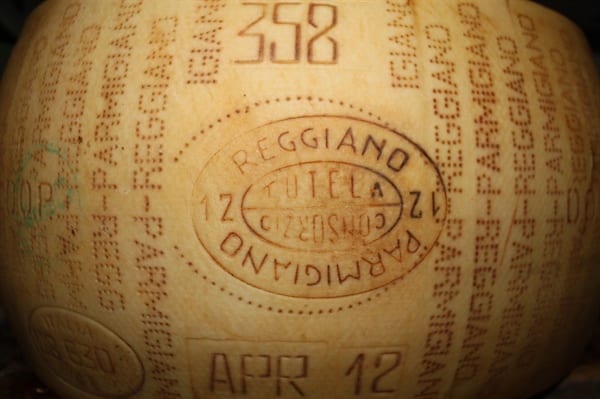 You can easily recognize a true parmesan – Parmigiano Reggiano because you will find a stenciling band, placed entirely around the wheel, which has pre-punched dots bearing the inscription
You can easily recognize a true parmesan – Parmigiano Reggiano because you will find a stenciling band, placed entirely around the wheel, which has pre-punched dots bearing the inscription
- PARMIGIANO-REGGIANO wording
- Acronym DOP
- Inscription CONSORZIO TUTELA
- Identification number of dairy
- Production month and year
If you have any doubts please consider that you can check the number of identification of dairy or the wheel code directly on the Consortium website.
Parmesan has been guaranteed for over seventy years by the Consortium Parmigiano Reggiano who is hardly working to offer transparency, controlled quality, an educational campaign to consumer, stores, and chefs.
Parmesan: 22-18-30 months matured
Based on the maturing, the package will bear one of the three colored labels: lobster (over 18 months), silver (over 22 months), and gold (over 30 months)
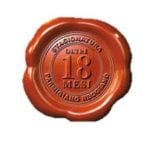 | The red-colored stamp characterizes Parmigiano Reggiano with over 18 months of seasoning. It has a pronounced lactic base, with vegetal notes such as grass, flowers and fruit, which make it ideal for snacks and aperitifs. |
 | A silver sticker identifies the cheese with a maturing of over 22 months, with accentuated aromas, like fresh fruit and citrus fruits, next to which appear hints of dried fruit. |
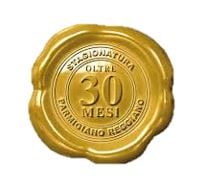 | Finally, a gold stamp makes the product recognizable with over 30 months of maturing, the most decisive in flavor and complex in aromas, with nutritive elements, which have been concentrated precisely in the long maturation. |
Parmesan: the history
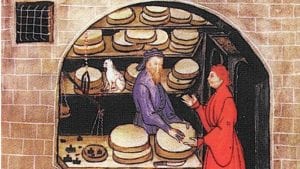 The origins of Parmesan are proved by Benedictine documents kept in the abbeys of San Colombano, in Bobbio (Piacenza), of Pomposa, in Codigoro (Ferrara), of S. Silvestro di Nonantola (Modena), of S. Benedetto in Polirone (Mantova) which date back to the 12th century.
The origins of Parmesan are proved by Benedictine documents kept in the abbeys of San Colombano, in Bobbio (Piacenza), of Pomposa, in Codigoro (Ferrara), of S. Silvestro di Nonantola (Modena), of S. Benedetto in Polirone (Mantova) which date back to the 12th century.
The production of this cheese was made possible thanks to the availability of salt from the salt pans of Salsomaggiore, which strongly characterized the territories of origin and their agriculture.
In that area, the presence of watercourses and wide pastures was flourishing and favored the breeding and the consequent production of cheese. Already in 1200 Boccaccio, in the Decameron, cited it: “Sausages … there was a whole mountain of grated Parmesan cheese, above which people who did nothing but make macaroni and ravioli, and cook them in capon broth …”
 One of the first testimonies on the marketing of Parmesan dates back to a notarial deed drawn up in Genoa in 1254, which mentions the “caseus parmensis” (Parma cheese). In a short time, the Parmesan began to expand in Romagna, Piedmont, and Tuscany, reaching the maritime centers of the Mediterranean sea.
One of the first testimonies on the marketing of Parmesan dates back to a notarial deed drawn up in Genoa in 1254, which mentions the “caseus parmensis” (Parma cheese). In a short time, the Parmesan began to expand in Romagna, Piedmont, and Tuscany, reaching the maritime centers of the Mediterranean sea.
In the seventeenth century, the Duke of Parma Ranuccio I Farnese began to increase the production of Parmesan, favoring the pastures and building large vaccherie. It was Duke himself who formalized the denomination of origin with an act dated 7 August 1612 to protect the product commercially. The cheese had in fact begun to expand quickly, up to Germany, in Flanders, in France, and in Spain.
At the beginning of the XIX century, Napoleon canceled the great ecclesiastical possessions and the lands were bought by the bourgeoisie. Dairies acquire the typical octagonal shape and remain active for 120-180 days a year when cows have the possibility of exploiting the grass.
 At the beginning of the 1900s, some important introductions to the production process take place, such as the use of grafting whey and steam heating, which improve the quality of the cheese and which are still current. Activities slowed down only in the 1940s, during the Second World War.
At the beginning of the 1900s, some important introductions to the production process take place, such as the use of grafting whey and steam heating, which improve the quality of the cheese and which are still current. Activities slowed down only in the 1940s, during the Second World War.
However, the recovery started in the 1950s, also thanks to important legislative goals in the food sector: the Italian law on designations of origin, the production standard, and the regulation for feeding cows. Subsequently, with the emergence of the European Community and the Common Agricultural Policy, the principle of recognition and protection of products of origin is no longer affirmed on a national scale, but on the Community level. In 1996 Parmigiano Reggiano is recognized as a European DOP.
Why Parmesan is so expensive?
Parmesan Recipes and news
The Danger of Counterfeit Cheeses
Beware of counterfeit cheeses, which are more common than you might think and which are also harmful to health. Counterfeit cheeses, how can we recognize them? Usually for us Italian and who know the labels of our products well, it is not particularly...
Easter Muffin Recipe with Parmesan
There is this Easter Muffin Recipe with Parmesan that is used every year in Italy as a way to celebrate the holiday. The ingredients are connected to the history of easter, sacrality and christianity. Bread is Christ bread of life, wine and his blood, meat is his...
Parmesan Aged Over 12 Months
Parmesan aged over 12 months is the youngest Parmigiano Reggiano, which is the minimum seasoning for the Consortium to be able to give it the D.O.P. Ageing Phase The aging phase is a crucial step to obtain an excellent Parmigiano Reggiano, in fact, once the...
How to store Parmesan
The Parmesan (Parmigiano Reggiano) is a cheese with low water content and this lets you store it for long periods, depending on the packaging and the environment. Vacuum packed Parmesan (Parmigiano Reggiano) You can store vacuum packed Parmesan (Parmigiano...
How to cut Parmesan
Do you know? Cutting a Parmesan wheel (Parmigiano Reggiano) is a real art and you can learn it. As in all the art the right instruments are the first step and one of the most important for Parmensan is the almond knife or "tagliagrana" (cut the cheese):...
Pesto Gnocchi
Pesto Gnocchi Ingredients: 600 gr of Potato Gnocchi 30 leaves of fresh Basil 1 pinch of salt 30 gr of Pine nuts 10 gr of Pecorino Romano cheese 30 gr of Parmigiano Reggiano cheese Extra Virgin Olive Oil Preparation: To prepare Pesto...
Cheese Soufflè
Cheese Soufflè is a very elegant dish of the French culinary tradition that can be both sweet and savory. The cheese soufflé is not as complex as it may seem, in fact, it is made with simple ingredients such as butter, flour, milk and egg yolks, all combined...
Pesto Lasagne
Pesto Lasagne is a recipe that combines two typical dishes of Italian culinary tradition: fresh egg pasta and Ligurian pesto. The bechamel sauce is a must in this recipe, which with its velvety touch makes everything more creamy and harmonious. The lasagna with...
Gnocchi Alla Sorrentina
Gnocchi Alla Sorrentina they are one of the best-known Campania dishes in Italy and in the rest of the world. They are simple and quick to prepare but they are able to amaze your guests at dinner, which will be able to taste the true essence of southern Italy and the...
Spring Caesar Salad with baby Asparagus and Balsamic Vinegar
Spring Caesar Salad is a recipe to prepare for the hottest days and when you do not have much time to cook. The Caesar salad is a salad now famous all over the world, designed for the first time by the Italian chef Cesare Cardini, who emigrated to the United States....
Risotto with Beetroot Juice, essence of Rosemary, and Balsamic Vinegar
Risotto with Beetroot Juice is a recipe that combines sweetness, color, and acidity. The beetroot, known for its sweetness and its cheerful and intense color, is the star of this tasty and creamy first course. Different for both color and taste from the classic...
Parmesan Cheese
Parmesan or Parmigiano Reggiano is a PDO cheese products that comes from the area of Parma, Reggio Emilia, Modena and Mantova in Italy.
Pumpkin and Parmesan Soup
Pumpkin and Parmesan Soup is a first course perfect to warm up the cold autumn period. This soup is a light, fast and at the same time really tasty dish. Ingredients: 150 g Parmigiano Reggiano with crust...
Ligurian Pesto Sauce
Pesto is a typical sauce of the Liguria region. This world-famous sauce for its green color and for its taste and it is included among the Traditional Ligurian Food Products (PATs). It is made with fresh basil, salt, pine nuts, garlic, Parmesan cheese, Sardinian Fiore cheese and extra virgin olive oil.
Caesar Salad
Caesar Salad is the most famous American salad, but few know that it was created by Italian chef Cesare Cardini, emigrated to the United States after the First World War. It is not the usual salad, but it is flavored with chicken and bacon to be also suitable for...
Ragù Tortellini
Ragù Tortellini mixes best two dishes of Italian culinary tradition: the Emilian tortellini and Bolognese ragù. Tortellini, both in broth and ragù, are a dish known all over the world: a thin dough of pasta that contains a filling of meat and parmesan for a first dish...
Pasta & Lentils
Pasta & Lentils is a typical dish cooked by grandmothers and handed down from generation to generation. It's perfect for the cold winter evenings. It may have a dense or more liquid texture and can be flavored for example with bacon, so it can be also liked by...
Risotto with Truffle
Risotto with Truffle is a delicious dish that conquers the most demanding palates with its unmistakable and amazing scent. Truffle in the kitchen is considered a real wealth, especially white truffle. No elaborate preparations, few ingredients and a carefully selected...
Pasta with Pesto
The basic recipe for pasta with pesto (basil sauce) is very easy if you have the right ingredients. Put in a pot 2 liters of water and warm up until it bubbles. Add a spoon of salt and taste it. Only after that, add the pasta and continue to cook without lowering the...
Traditional Pizzoccheri
Traditional Pizzoccheri of the Pastificio Chiavenna, are produced according to ancient local traditions and made with durum wheat flour and buckwheat flour better form a kind of food containing high protein food and natural fibers. Pasta made from buckwheat contains...
Penne with Amatriciana Sauce
Pasta with Amatriciana sauce is a traditional, zesty Italian pasta sauce, based on guanciale, (salt-cured pork jowl), pecorino cheese and tomato. Originating from the town of Amatrice (in the mountainous Province of Rieti of Lazio region), the Amatriciana is one of...
Spaghetti with Extra Virgin Olive Oil
Spaghetti with Extra Virgin Olive Oil is the most simple dish. There are four basic types of olive oil and the Italian government strictly controls every single bottle before allowing it to bear the “extra-virgin” seal. The only oils which can qualify are those which...
Carbonara Spaghetti
Carbonara Spaghetti is an Italian pasta dish from Rome based on eggs, cheese (Pecorino Romano or Parmigiano-Reggiano), bacon (guanciale or pancetta), and black pepper. Spaghetti is usually used as the pasta; however, fettuccine, rigatoni, linguine or bucatini can also...
Classic Italian Lasagna
Classic Italian Lasagna made from scratch, bubbling with cheeses, and oozing Bolognese sauce, is easier than you think to make and it is absolutely delicious. The best Classic Italian Lasagna recipe is made with home-made ingredients, including the eggs pasta, meat...
Milanese Risotto
Milanese Risotto (or Saffron Risotto) is a north Italian rice dish cooked in a broth to a creamy consistency. The broth can be derived from meat, fish, or vegetable. Many types of risotto contain butter, wine, and onion. It is one of the most common ways of cooking...
Rice Arancine
Rice Arancine are stuffed rice balls, which are coated with breadcrumbs, and fried. Arancini are usually filled with ragù (meat and tomato sauce), mozzarella, and peas. There are a number of local variants that differ in fillings and shape. The name derives from their...
Polpette
Polpette (meatballs) in Italy are generally eaten as a main course or in a soup. The main ingredients of an Italian meatball are beef and/or pork and sometimes poultry, salt, black pepper, chopped garlic, olive oil, Romano cheese, eggs, breadcrumbs, and parsley, mixed...
Eggplant Parmigiana
Eggplant Parmigiana called "parmigiana di melanzane" or "melanzane alla parmigiana", is an Italian dish made with a shallow or deep-fried sliced aubergine filling, layered with cheese and tomato sauce, and then baked. Parmigiana made with a filling of eggplant (also...
Piadina Romagnola
Piadina Romagnola is a thin Italian flatbread, typically prepared in the Romagna region. It is usually made with white flour, lard or olive oil, salt, and water. The dough was traditionally cooked in a terracotta dish, although nowadays flat pans or electric griddles...
Porcini Mushrooms Risotto
Porcini Mushrooms Risotto presses all the right buttons, with intense porcini mushrooms and plump arborio rice. Risotto is a north Italian rice dish cooked in a broth to a creamy consistency. The broth can be derived from meat, fish, or vegetable. Many types of...

